Step 1: Get ready
1. No open-toe shoes.
2. No shorts/short skirt or dress.
3. No eating or drinking in the lab. We do provide a shelf for school bags, water bottles and such. No opened food or drink is allowed in the lab.
4. Long hair must be tied up.
5. Use a proper channel to report medical conditions related to this lab. This lab will use live fruit fly for observational purpose. This lab will use latex gloves.
Step 2: Documentary
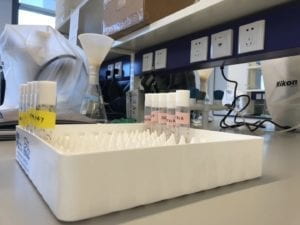
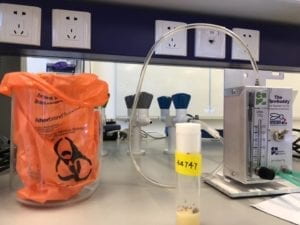
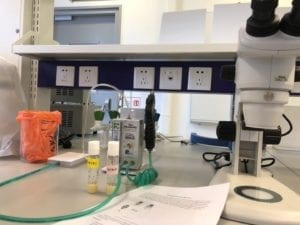
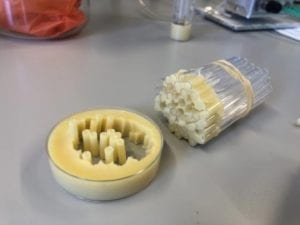
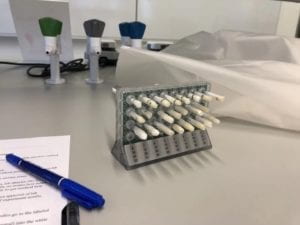
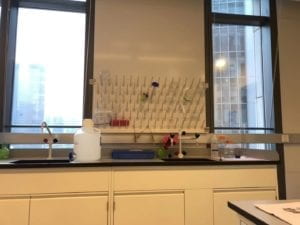
Step 3: Analyze your results
Method:
Column 1. Index at reading (from 1)
Column 2. Date of reading
Column 3. Time of reading. Please start from line 13. 16:00:00. From this time on all monitors are read once every hour.
Column 4. Monitor status. 1= valid data received.
Column 5 to 10 are not used in this experiment.
Column 11. Channel 1
Column 12. Channel 2
…
Column 42. Channel 32

When looking through the data column returned from the biology lab, we can discover the activity regularity of flies.
In tube No. 1-2 6-10 12-13 16:
The activity of flies seems inconspicuous at all.
This phenomenon might be caused by:
1. We wrongly put in too much CO2 into the tube, and the flies are always sleeping or even have already died because of the high concentration of CO2 gas in the tube.
2. We accidentally stuck the stickers onto the wrong positions and blocked the light sensors so that the sensors didn’t work.
3. The sensors might have broken.
In tube No. 3-5:
The activity of the flies lasts for almost all days.
This phenomenon might be caused by:
The lack of the gene that shut down its circadian rhythm.
In tube No. 11 14-15:
The activity of the flies is regular.
This phenomenon might be caused by:
The normal circadian rhythm that the flies have.
Step 4: Conclusions
We learned in the course that the lack of one kind of genotype of the flies might lead to the disorder of circadian rhythm behavior. And caused the irregular activities of flies.
And also, we learned about how the scientific community approaches the results of these experiments. When doing an academic experiment, scientists will first make sure the safety conditions. Then, planning the experiment step by step. Thinking what might happen during the experiment and thinking of how to deal with the possible result. After that, scientists will do the experiment as scheduled. And finally, analyze the data from the experiment to make discoveries. These rigorous steps are all necessary for a successful scientific experiment.
When connecting these to my own experiences when developing robots and software for our class, the first thing I thought about is the animal behavior observation we did in the course lab. However, it is a brand new feeling when we can actually observe the creatures in this experimental way. It can provide us more specific patterns of the creatures than just staring at them or watching video from Youtube. So I consider it as a precious chance to discover the biology observation part of our bio-inspired robot system’s development.
Besides, since Kris and I decide to do more experimental attempt in our final project. I think it is a really good pre-req experience for us to conduct a relatively good experiment for our project. I believe we will keep working on the experimental discovery and keep making progress.